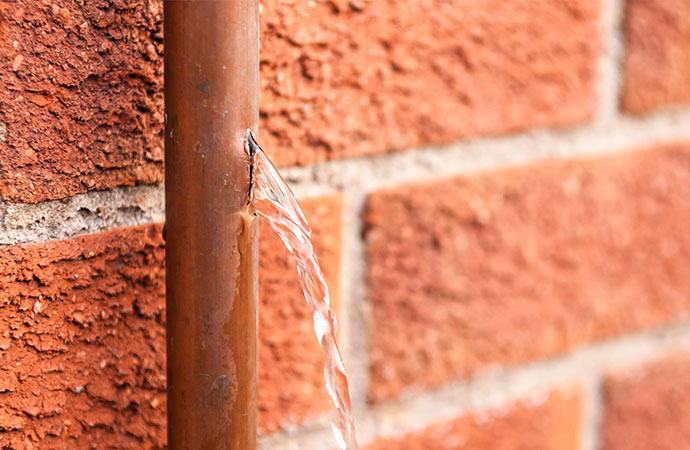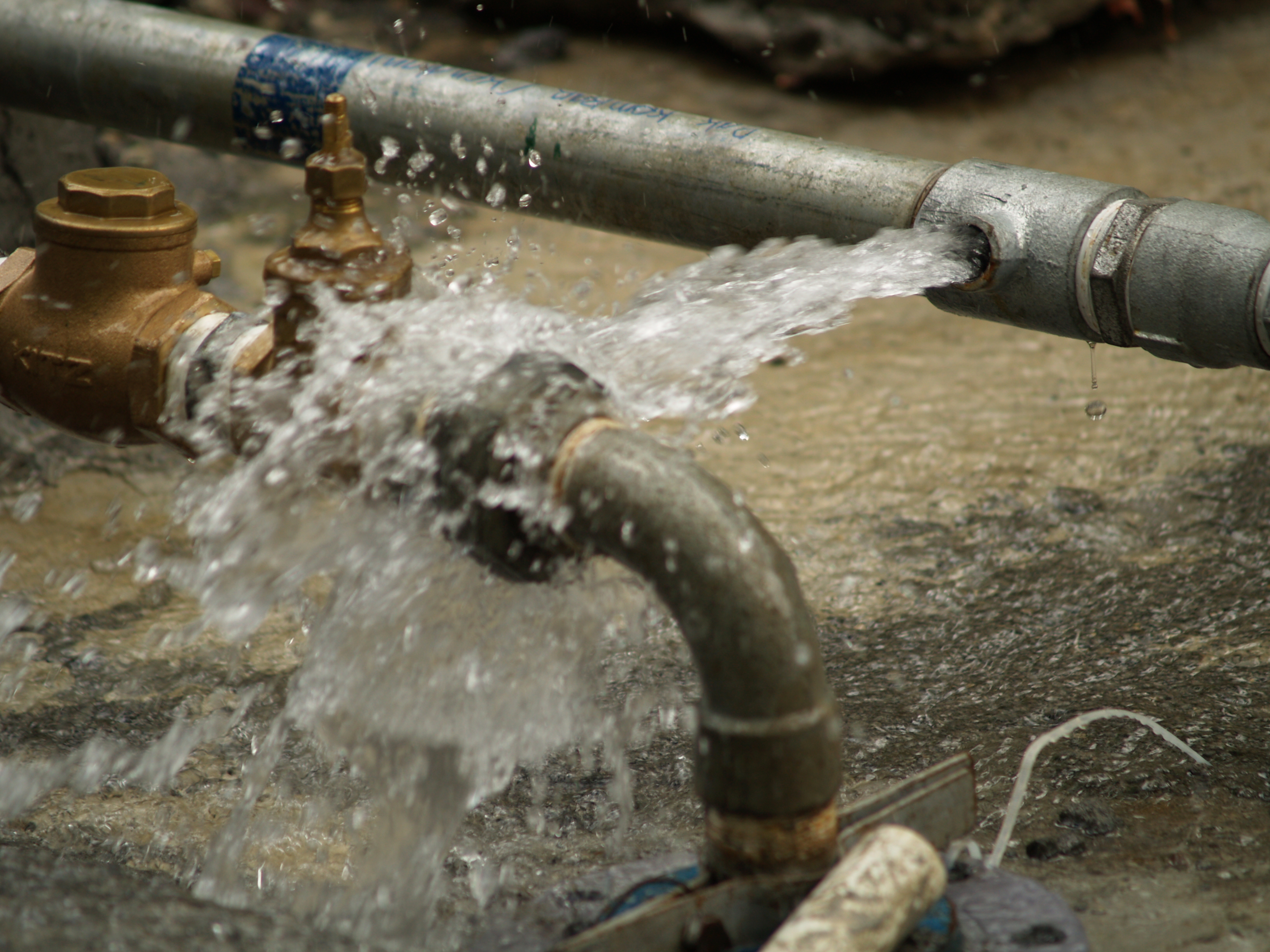Your Important Guide to Effective Septic Tank Maintenance
Your Important Guide to Effective Septic Tank Maintenance
Blog Article
They are making a few good observations related to Do’s And Don’ts For Homeowners Managing With Water Damage overall in this content further down.

What should you do if a pipes bursts in your residence? Do you desire a mini-waterfall and also flooding in a location of your home? You should act quick if you locate on your own in this scenario. The longer you wait, the much more severe the damage that can occur to your property. The presence of mind is type in these events. For these reasons, you need to learn how to act in the event of a burst water pipe. Take a look at the adhering to ideas listed below to help you act fast due to the fact that time is important.
Turn off the Main Waterline Valve
The first thing to do? Close the shut-off valve. Look for the neighborhood shut-off shutoff to turn off the water in one details location just. Go for the primary water line valve and transform it off if you do not understand where the local shut-off valve is. This step will certainly remove the water promptly in your entire home. Typically, the main shutoff is located outside the house alongside the water meter. If it's not there, you can likewise discover it in 2 locations: in the basement at eye degree or the first floor on the ground. Generally, builders placed the shut-off shutoff in the main ground level washroom or ideal beside it.
Call Water Damage Repair Pros for Help
After closing the water source, call the experts for assistance. With their specialist help, you can avoid much bigger water damages consisting of warped baseboards, loose ceramic tiles, or harmed frameworks.
Document the Damage For Insurance coverage
While you're awaiting the pros to get here, obtain some documentation of the damage caused by the wayward pipeline. Take pictures and videos of every little thing. Do close-up shots of the harmed spots and also valuables. Your documents will certainly serve as evidence for your house owner's insurance coverage. Maintaining aggressive with this situation helps you to file a claim for protection, which will certainly better sustain you and your family to get back on your feet.
Salvage Things That Can Be Saved
Check out the harmed things and also take out the most vital ones from the pile once you're done taking pictures. Dry them off in a dry/warm place far from the broken location and also attempt to protect them as long as you can. Drag as much wetness as you can to the material so it can begin to dry.
Begin the Drying Refine
You need to start the drying process as soon as possible. Thankfully, the water from your waterlines is currently tidy so you do not have to stress over sewer water. The moving water might have disrupted the dust and particles in your floorboards and also rugs. In this situation, put some handwear covers on and also start some damage control. Usage pails to dispose out the water. Blot out as much water as you can from the surface areas with old towels. Activate an electric fan or open your home windows to advertise air flow. These steps will certainly speed up to completely dry as well as discourage mold and mildew as well as mildew development.
Professionals are the only individuals certified to evaluate appropriately as well as deal with the burs pipes and also subsequent damages. They usually provide quiet red flags like bubbling paint, water discolorations.
What should you do if a water pipeline bursts in your home? For these factors, you need to discover how to act in the event of a ruptured water pipe. After shutting the water resource, call the professionals for assistance. With their professional aid, you can prevent a lot bigger water damage including deformed baseboards, loose floor tiles, or damaged structures. The good news is, the water from your waterlines is already clean so you do not have to stress about drain water.
BROKEN WATER PIPES: COST TO REPLACE & WAYS TO FIX A PIPE
CAUSES OF A BROKEN WATER PIPE
A water pipe can break for several reasons depending on the environment you live in, type of pipe, and circumstances.
The most common cause of broken pipes is freezing. If you live in a colder climate, this could happen. When water freezes it increases in volume by 9% and the pressure in the pipes can go from 40 psi to 40,000 psi. Clearly, this could be detrimental to the pipes. Water freezing causes quick expansion, which puts stress on the pipes and could lead them to crack or weaken. When water thaws, it will leak out the cracks. Other changes in water pressure can also cause breakage. Another common cause of broken water pipes is age.
Depending on the material, water pipes can last anywhere from 70-100 years. But the older they get, the more susceptible they are to weakening and corroding. Older pipes coming into contact with another material could speed up the corrosion process as well. PVC pipes can become brittle with age, while copper is prone to corrosion and stress over time. Something that could also potentially break water pipes is when they move. They may move from construction or the house settling. Moving can stress the fixed pipe which may lead to a leak or burst pipe.
HOW MUCH WATER COULD LEAK INTO YOUR HOUSE FROM A BROKEN PIPE?
The amount of water that leaks depend on how big the break in a pipe is. If it is just a minor crack, water will slowly leak out. This isn’t as serious as a full broken pipe, but it can still cause significant damage to your home. Burst pipes can leak up to 10 gallons of water per minute. The amount of water leaked also depends on what appliance is involved. The water line to your refrigerator can leak ½ to 1 gallon per minute depending on water pressure. One toilet supply line may leak 2-3 gallons a minute and a washing machine hose will leak up to 10-12 gallons per minute.
TURN THE WATER OFF
Doing this first is imperative; everything else can wait. You need to deactivate the water supply to stop the flow of water and prevent more water from leaking into your home. Shutting off the water could potentially save you thousands in water damage repairs. Locating the water shutoff valve depends on the climate you live in. For colder climates, the valves are usually inside, such as in the basement. For houses in milder weather, the shutoff valves will probably be outside—either attached to an exterior wall or in an underground box with a removable lid.
OPEN A FAUCET
The next thing to do is to open a faucet or turn on a sink. This will relieve any remaining water pressure in the pipes and ensure a full-shut down.
GET RID OF THE WATER
The quicker you get rid of the water, the less water damage and mold there could be. Use a mop and a shop vacuum to help get clean up the water. Use towels to dry everything the best you can.
CUT AND REMOVE THE DAMAGED PIPE
Once you have shut off the water and drained the damaged water pipe, you can begin to fix the issue. Cut out the damaged section of the pipe with a pipe cutter, ensuring that you also cut one inch extra on each side of the damage. Once you get rid of the broken part of the pipe, you may begin repairs.
https://www.wmhendersoninc.com/blog/broken-water-pipes-cost-to-replace-ways-to-fix-a-pipe/

Do you really like reading about Water Damage: Tips On What To Do When Your House Is Flooded? Put a remark further down. We'd be pleased to find out your opinions about this blog post. We are looking forward to see you back again later on. Appreciated our blog entry? Please share it. Help someone else find it. Bless you for your time. Visit again soon.
Report this page